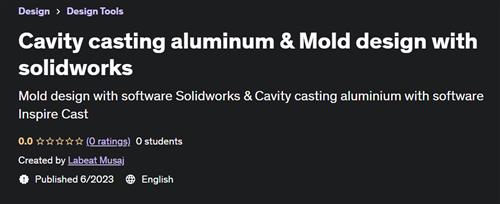Blender Cosmos Procedural Gas Planets with Blender

Free Download Blender Cosmos Procedural Gas Planets with Blender
Published 2/2024
Created by Yassine Larayedh
MP4 | Video: h264, 1280×720 | Audio: AAC, 44.1 KHz, 2 Ch
Genre: eLearning | Language: English | Duration: 7 Lectures ( 1h 14m ) | Size: 837 MB
Master Cosmic Environments in Blender
What you’ll learn:
What is proceduralism and how it works?
How nodes work? and understanding how they connect and speak to each other.
The logic of proceduralism and how to build logical node-trees
Lighting, Rendering, Compositing,…
Requirements:
Computer
Blender 4.0
Description:
Class Description:In this class you’ll learn how to create a procedural gas planet in Blender.What will you learn?What is proceduralism? and how it works?How to use nodes?LightingRenderingCompositingI want to help you untangle some complicated concepts in Blender, that people always assumed it is only for the elite of us to deal with math and vectors.By the end of this course, you will have a solid understanding of how to create procedural materials in Blender.My ultimate goal is to equip you with a solid foundation for your future endeavors in the world of Shading and proceduralism.Who this class is for?This course can suit all levels. But I will assume that you have at least some basic knowledge on how to work with Blender.Project DescriptionIn this class, you will learn about proceduralism by creating a Gas Planet in Blender.Setting up the blender sceneIn this video, we will start shading our planet by creating:The basic geometry of the planetBuilding our lighting setupSetting up the cameraTweaking some render settings.and lastlyActivating some add-ons, we’ll need.Creating the planet shader – part 1In this video, you will start shading you planet by creating the general look of a gas planet’s surface. (Umm. Even though gas planets don’t have a surface xD)Creating the planet shader – part 2In this video, you will finalize the look of your planet, by adding vector distortion.This is the most complicated video in this course because for some people it might be tough to wrap their minds around what’s happening in the logic of the nodes.But if you give it some time, everything will sink in.Understanding distortion in BlenderThis is a follow-up to the previous video.In this one, I will try to explain the logic we built our node tree around in the previous video.Basically, how to do operations between the texture and the texture coordinate node.Creating the ringsIn this video, you’ll create the rings around your planet. This will be fun!RenderingIn this video, you’ll finalize your scene and prepare it for rendering byLocking the shot and lighting for the planet.Adding some simple camera animation.And lastly, setting up our render settings.By the end of this video, you’ll have a scene that is ready to hit render.CompositingOur journey is coming to an end :(In this final video, you will use the Blender Compositor to add a background to your planet and do some global adjustments to finish everything.So now, if that’s something you’re into, I can’t wait to see you in class.
Who this course is for:
Students interested in learning more about the world of nodes and proceduralism in Blender
Students interested in creating planets in Blender
Homepage
https://www.udemy.com/course/blender-cosmos-procedural-gas-planets-with-blender/
DONWLOAD FROM RAPIDGATOR
mdggo.Blender.Cosmos.Procedural.Gas.Planets.with.Blender.rar.html
DONWLOAD FROM UPLOADGIG
mdggo.Blender.Cosmos.Procedural.Gas.Planets.with.Blender.rar
DOWNLOAD FROM NITROFLARE
mdggo.Blender.Cosmos.Procedural.Gas.Planets.with.Blender.rar
Fikper
mdggo.Blender.Cosmos.Procedural.Gas.Planets.with.Blender.rar.html



